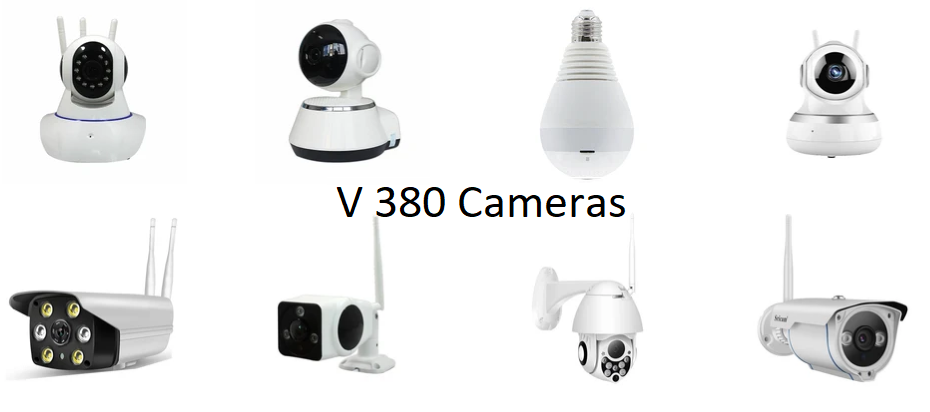In the realm of modern surveillance, mini and Wi-Fi cameras offer significant advantages over traditional wired alternatives, offering greater flexibility, mobility, and ease of integration into various network environments. However, the performance and reliability of these systems are heavily dependent on the network infrastructure that supports them. Routers, as the central nodes of home or office networks, play a crucial role in the operation of Wi-Fi cameras. This paper investigates the functions of routers in supporting mini and Wi-Fi cameras, focusing on their role in data transmission, network stability, security, and overall user experience. It further discusses the practical implications of router configuration for popular camera models, with case studies of the V380 and A9 cameras, to highlight real-world applications and challenges.
Mini and Wi-Fi cameras, such as the V380 and A9, are increasingly employed in diverse settings ranging from home security systems to small office surveillance. Unlike traditional cameras that rely on physical cabling for video transmission, Wi-Fi cameras use wireless networks to send data to remote devices or cloud-based servers. This reliance on Wi-Fi networks introduces the router as a critical component of the surveillance setup. Routers not only provide the necessary network connectivity but also influence the overall quality, speed, and security of video feeds transmitted by the cameras. While the importance of routers in these systems is often overlooked, a closer look reveals how router specifications, placement, and configuration directly affect the performance of mini and Wi-Fi cameras.
The Role of Routers in Camera Data Transmission
Routers serve as the core component responsible for managing network traffic, including the transmission of video data from Wi-Fi cameras to viewing devices or cloud storage. Their role is pivotal in ensuring that video streams are not interrupted, and that high-quality footage is maintained. Below are several key aspects of router functionality critical to Wi-Fi camera setups:
- Data Routing and Bandwidth Allocation
Mini and Wi-Fi cameras typically transmit large video files, especially when high-definition or even 4K footage is involved. This demands a high-capacity network, and the router must efficiently manage this data load. Routers equipped with dual-band or tri-band capabilities can allocate bandwidth more effectively, allowing the camera to communicate without interference from other devices on the network. The V380 camera, for example, works optimally with a router that can allocate sufficient bandwidth, as it streams HD video footage in real time. On the other hand, cameras such as the A9, which might be used for continuous monitoring, can benefit from routers that prioritize real-time data flow through Quality of Service (QoS) settings. - Network Latency and Speed
Latency—essentially the delay between sending and receiving data—plays a critical role in video surveillance. High latency can result in lag, affecting the fluidity and responsiveness of video feeds. Routers that support the latest Wi-Fi standards, such as Wi-Fi 5 (802.11ac) or Wi-Fi 6 (802.11ax), provide faster speeds and lower latency, which are essential for real-time monitoring. For both the V380 and A9 cameras, low-latency transmission ensures that users can access live video feeds with minimal delay. Particularly in security settings, where immediate action may be necessary, reducing latency is paramount. - Signal Strength and Range
The router’s ability to deliver strong, consistent signal coverage across the area in which the camera is installed is critical. This is especially important for mini cameras, which are often placed in distant or difficult-to-reach locations. Routers with beamforming technology or mesh network capabilities can focus Wi-Fi signals toward specific areas, improving connection strength between the router and camera. For example, the V380 camera, often used for home security in diverse locations, may require a mesh system to maintain a stable connection in large homes. The A9 camera, depending on its deployment environment, can also benefit from beamforming technology to ensure that the signal reaches areas with weak connectivity.
Security and Router Configuration
Wi-Fi cameras transmit sensitive data, making them vulnerable to cyber-attacks if the network is not adequately secured. Routers play a critical role in safeguarding video feeds, preventing unauthorized access, and ensuring data integrity.
- Encryption and Secure Connections
Wi-Fi cameras typically use WPA2 or WPA3 encryption to secure data transmission between the camera and the router. It is essential for the router to support the latest security protocols to protect against hacking or data interception. Both the V380 and A9 cameras benefit from routers that enable WPA3 encryption, which ensures that video data remains protected during transmission. - Firewalls and Access Control
Routers are equipped with built-in firewalls and access control features that help safeguard against unauthorized users attempting to access the camera feed. For instance, routers with IP filtering can be configured to allow only specific devices to connect to the camera, enhancing security. Both V380 and A9 users should configure their routers to block unauthorized devices and limit access to trusted IP addresses, ensuring that only legitimate users can view the surveillance feed. - Firmware Updates
Keeping the router’s firmware up to date is essential for ensuring that any security vulnerabilities are patched. Many routers automatically update their firmware, but manual updates may also be necessary. This is particularly important in the case of cameras like the A9, where any breach in the router’s security could compromise the video feed.
Practical Examples of Camera Setups: V380 and A9
To demonstrate the practical impact of router features on Wi-Fi camera systems, we will explore typical setups for two popular camera models: V380 and A9.
- V380 Camera Setup
The V380 is a compact Wi-Fi camera often used in home or office environments. For optimal performance, it is recommended to use a router with dual-band capabilities (2.4 GHz and 5 GHz) to ensure that the camera remains connected even in environments with multiple competing devices. Users who experience weak signal strength in remote corners of their homes can enhance their setup with a mesh router system, which expands Wi-Fi coverage and eliminates dead zones. Additionally, enabling QoS features on the router can prioritize video streaming from the V380, ensuring that the camera’s footage receives the necessary bandwidth for smooth operation. - A9 Camera Setup
The A9 camera, often used in environments requiring continuous monitoring, also benefits from a router that supports high-speed transmission and secure connections. For an A9 camera setup, a Wi-Fi 6 router is recommended, as it offers faster speeds and greater capacity to handle multiple connected devices without compromising the quality of the camera feed. For users in larger spaces or multi-story homes, employing a mesh network with strategically placed access points will provide the necessary signal coverage for continuous video transmission. Additionally, configuring the router with strong WPA3 encryption and IP filtering ensures that the camera feed remains secure from potential intruders.
Router Configuration for Optimized Camera Performance
Achieving optimal performance from mini and Wi-Fi cameras like the V380 and A9 requires careful router configuration:
- Frequency Band Considerations
Mini cameras typically function better on the 2.4 GHz band due to its wider coverage range, although it is more susceptible to interference. However, for environments where the camera is located near the router or in a low-interference area, using the 5 GHz band can provide faster data transmission speeds. Routers that support dual-band or tri-band frequencies can automatically select the best band for the camera, ensuring a stable connection. - Router Placement
The location of the router is critical to ensuring reliable Wi-Fi coverage. For mini cameras placed in corners of the house or distant areas, positioning the router centrally and away from obstructions is essential. In larger homes, mesh networks provide an effective solution for extending coverage to all areas, ensuring that mini cameras such as the V380 and A9 maintain strong and consistent connections. - Firewall and Security Settings
Users should enable WPA3 encryption on their routers to ensure that communication between the camera and network remains secure. Additionally, configuring the router’s firewall settings to block unauthorized IP addresses and restricting camera access to only trusted devices can enhance security and prevent malicious activity.
Conclusion
Routers are fundamental to the successful operation of mini and Wi-Fi camera systems, providing the necessary infrastructure for data transmission, network reliability, and security. As demonstrated through the examples of the V380 and A9 cameras, choosing the right router and configuring it effectively can significantly enhance the performance of Wi-Fi cameras. Routers with advanced features such as dual-band support, mesh networking, beamforming, and robust security protocols ensure that video feeds are transmitted seamlessly and securely, allowing users to maintain a reliable surveillance system. By understanding the interplay between routers and Wi-Fi cameras, users can optimize their camera setups for better performance, security, and user experience.
Source: https://19816811.com
Email: cameraexpert247@gmail.com





























